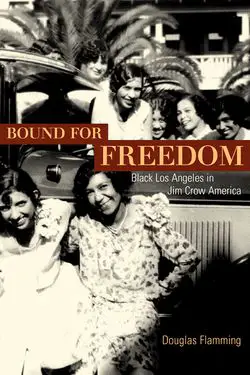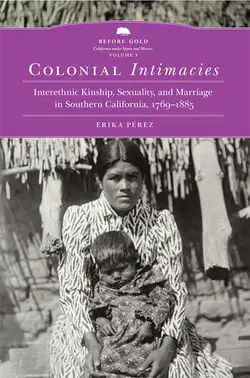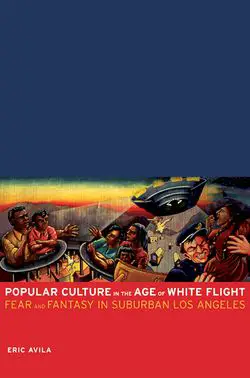Top Ten Books on Los Angeles History
Los Angeles has emerged from a small pueblo in the Spanish colonial backwater to become one of the most recognizable and populous cities in the United States. Los Angeles is an idea, the butt of many jokes, and a topic of serious academic inquiry. Historians have studied Los Angeles for over a century. In terms of historical scholarship, Los Angeles sits at an interesting spot. Its history can be explored from Indigenous, Spanish, and American points of view, it can be on a colonial or modern reading list, regionally it is the Spanish north, American West, and Pacific Rim. When looking at race relations in Los Angeles, we see a diversity that is characteristic of the American west, and contrary to the racial dichotomy in the American South.
For those who are interested in studying the history of Los Angeles, these ten books below are a start. These ten books cover a variety of themes and topics that get at the heart of this unique place. In no particular order:
Carey McWilliams, Southern California: An Island on the Land (Layton: Gibbs Smith, Publisher, 1946).
Carey McWilliams is easily his own subject of study when it comes to Los Angeles History. This journalist, editor, and lawyer is one of the most well known figures among Southern California historians and enthusiasts. McWilliams was a prolific writer and wrote extensively on Southern California. Southern California: An Island on the Land is widely regarded as one of the best works on Los Angeles in the 1920-1940s. It details many of the unique personalities in Los Angeles at the time, and also gives thoughtful consideration to minorities as well--unique considering this was first published in the 1940s. If you would like an overview of Los Angeles from someone who was there are the time, this book may be just what you're looking for. You may be frustrated by McWilliams' lack of footnotes, though.
Douglas Flamming, Bound for Freedom: Black Los Angeles in Jim Crow America (Berkeley: University of California Press, 2006).
One of the most enduring myths about California is that African Americans did not experience as much racism or hostility there as in the South. In Bound for Freedom Flamming provides one of the most comprehensive studies of African American Los Angeles from the late 19th century to World War II. He illustrates that for most African Americans, when they came to Los Angeles, they came to a city that was half-free. Not as violent as the Jim Crow South, but just as racist. Ultimately, Flamming argues that the Civil Rights Movement of the 1950s and 1960s would have been unfeasible were it not for the work of African American activists in his study. This book is well-researched and quite thorough. If you're interested in African American history or the history of the Civil Rights Movement, you will likely enjoy this book.
Erika Pérez, Colonial Intimacies: Interethnic Kinship, Sexuality, and Marriage in Southern California, 1769-1885 (Norman: University of Oklahoma Press, 2018).
In this book, Pérez explores colonization and power through intimate relationships. She explains how everyday interactions illuminate larger ideas about the colonial projects that frame them. Pérez also looks at the children produced through these interethnic relationships to explain how their experiences with colonialism were different than their parents'--and that this was often related to their sex, and what economic opportunities they might have. This is one of the more recent books on this list, yet it covers the earliest period, chronologically. Those who are interested in the history of imperialism or colonialism may be interested in this book.
Daniel Hurewitz, Bohemian Los Angeles and the Making of Modern Politics (Berkeley: University of California Press, 2008).
If you read this book with George Chauncey's Gay New York: Gender, Urban Culture, and the Making of the Gay Male World, 1890-1940 you would have a thorough understanding of the pre-Civil Rights Movement history of the gay community on the East and West coasts. Hurewitz uncovers the story of this movement from a group of artists, leftists, and gay men and women who, together, began to formulate ideas that we might now call "identity politics." This book uses an assortment of records to tell this story, and Hurewitz argues that the legacy of these people is still significant in American politics today.
William F. Deverell, Whitewashed Adobe: The Rise of Los Angeles and the Remaking of its Mexican Past (Berkeley: University of California Press, 2004).
In focusing on several key points in Los Angeles history, Deverell explores the process through which Los Angeles became modern, white, and American. Deverell argues that this process took place from the late 19th century through the early 20th century and occurred through the selective erasure and obliteration of its Mexican past. If you're interested in the history of memory, this book provides a fascinating perspective on how places are remembered, or how histories of places are created.

Becky M. Nicolaides, My Blue Heaven: Life and Politics in the Working-Class Suburbs of Los Angeles, 1920-1965 (Chicago: University of Chicago Press, 2002).
In My Blue Heaven Nicolaides lays out the early history of suburbanization near Los Angeles--focusing on the suburb of South Gate. Nicolaides explains how some of these early homeowners in this blue-collar area built their homes from the ground up. Over time, as the are became more diverse, and especially as it was geographically situated next to the African-American community of Watts during the Civil Rights Movement, homeowners in South Gate became increasingly became interested in protecting their homes. However, this was not just about literally protecting their homes, rather they were also concerned with what their homes represented: self-reliance and white homeowner rights.
Nathaniel West, The Day of the Locust (New York: Random House, 1939).
While this may be a novel and part of our Western Canon, it can also be considered a loose primary source. In The Day of the Locust West writes about Hollywood during the Great Depression. The novel is from the perspective of the protagonist Tod Hackett, and the tone for much of the book is despondent and cynical. In the novel, all of the characters are shallow, and all have come to Hollywood to make it big. The city is full of outcasts and rejects and West is critical of the masses and popular culture. Where this seems like a primary source is in its discussion of the American dream and its elusiveness--particularly for Americans who were negatively affected by the Great Depression. Similarly, a significant number of people did try to move to Los Angeles during this period because the movies that came from Hollywood seemed to suggest that the Depression had not reached Tinseltown. Nevertheless, it had.
Eric Avila, Popular Culture in the Age of White Flight: Fear and Fantasy in Suburban Los Angeles (Berkeley: University of California Press, 2006) and Genevieve Carpio, Collissions at the Crossroads: How Place and Mobility Make Race (Berkeley: University of California Press, 2019).These two books are side-by-side and complement each other in specific ways. Carpio explores how mobility helped to define race by looking at specific ordinances and policies. Race often determined how easily one was able to move in and out of specific spaces. At the same time, Avila's work explores the racialization of public entertainment after World War II. Both books speak to the racialization of space--whether that is the suburbs, Disneyland, or boarding schools.
George J. Sanchez, Becoming Mexican American: Ethnicity, Culture, and Identity in Chicano Los Angeles, 1900-1945 (Oxford: Oxford University Press, 1995).
In this groundbreaking work, Sanchez explains the formation of Mexican identity in Los Angeles the first half of the 20th century. Sanchez traces this process by looking at the lives of Mexican immigrants to the city and follows the identity of these individuals from migrant to eventually resident. Sanchez explores Mexican Americans' adaptation, accommodation, and resilience through religion, kinship, and consumerism. Of note is Sanchez's exploration of this topic during the Repatriation campaign of the Depression. If you are interested in Latino historiography, this book should be at the top of your list.


